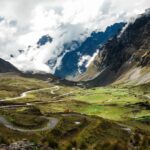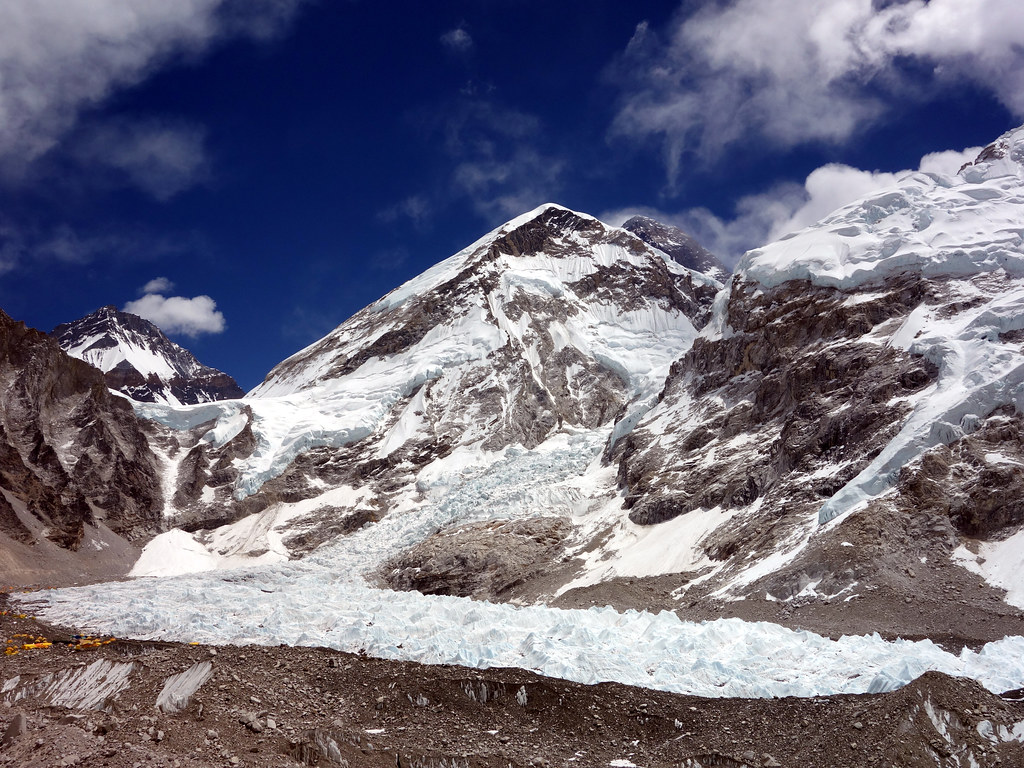Introduction to Bolivia’s North Yungas Road
Imagine a road so perilous that it earns the nickname “The Death Road.” This is no figment of imagination but the stark reality of Bolivia’s North Yungas Road. Known locally as “El Camino de la Muerte,” this infamous road connects the Bolivian capital of La Paz with the Yungas region. Its notoriety is not unfounded. With sheer cliffs, narrow paths barely wide enough for two vehicles, and a lack of guardrails, the North Yungas Road presents a formidable challenge to even the most experienced drivers.
The road’s reputation precedes it, drawing the curious, the thrill-seekers, and the adventurous to experience one of the most dangerous journeys in the world. But beyond the adrenaline, there lies a route steeped in history, surrounded by breathtaking natural beauty, and filled with tales of survival and loss. In this introduction, we embark on a journey to uncover 10 things you didn’t know about Bolivia’s North Yungas Road, revealing the allure and caution that this remarkable path demands.
10 Fascinating Facts about the North Yungas Road
A Prisoner-Built Marvel (or Nightmare?)
The North Yungas Road, often referred to as “The Death Road,” holds a history as intriguing as it is grim. Constructed in the 1930s, the road was built by Paraguayan prisoners of war. These individuals faced incredibly harsh conditions, working in an environment that was as unforgiving as the road they were constructing. The exact human cost of this endeavor is hard to quantify, but it’s believed that many lives were lost in the process. The construction of this road is a testament to human endurance but also a reminder of the suffering involved.
Not the Main Road Anymore
In recent years, Bolivia has constructed a new road to serve as the primary route between La Paz and the Yungas region. This modern pathway offers a safer alternative to the treacherous North Yungas Road. Today, the infamous road has found a new purpose, attracting cyclists and tourists from around the globe. These adventurers are drawn by the road’s notorious reputation and the breathtaking views it offers, making it a unique destination for those seeking thrills off the beaten path.
Earning its Nickname: The Dangers of the Road
The North Yungas Road earned its nickname, “El Camino de la Muerte” (The Death Road), for very good reasons. Here are some factors contributing to its danger:
- Narrow Width: The road is often no wider than 3 meters, barely enough for two vehicles to pass each other.
- Sheer Drops: The road hugs the side of the mountain, with precipitous drops of up to 600 meters directly beside it.
- Lack of Guardrails: For most of its length, the road lacks guardrails or any form of barrier to prevent vehicles from plummeting off the edge.
Historically, it’s estimated that 200-300 travelers lost their lives on this road annually. While improved safety measures and the decrease in vehicular traffic have reduced the number of fatalities, the road remains a stark reminder of the dangers that can come with traversing such a treacherous path. Its reputation, while daunting, continues to be a significant draw for those seeking to experience one of the world’s most dangerous roads.
A Thrilling Thrill-Seeker’s Paradise

The North Yungas Road’s Popularity as a Mountain Biking Destination
The North Yungas Road, infamous for its danger, has paradoxically become one of the world’s most sought-after mountain biking destinations. Thrill-seekers and adventure cyclists are drawn to this road for the unparalleled experience it offers. The typical journey down this road is not just about braving its perils but also about immersing oneself in an adrenaline-fueled downhill ride. Cyclists start at a high altitude and descend through winding paths, navigating sharp turns and narrow passages, all while surrounded by some of the most scenic vistas in Bolivia.
More Than Just a Death-Defying Ride
Beyond the thrill of the ride, the North Yungas Road offers an immersive experience into the natural beauty of Bolivia. The road cuts through the Yungas cloud forests, providing breathtaking views of lush greenery, cascading waterfalls, and steep, verdant cliffs. Along the way, riders often encounter a variety of wildlife, from colorful birds to unique species that call these forests home. This journey is as much a nature tour as it is an adventure sport, offering sights and experiences that are rare and captivating.
A Biodiversity Hotspot: The Yungas Ecosystem
The Yungas region, which the North Yungas Road traverses, holds a special place in the heart of nature enthusiasts. This area is a transition zone between the high Andes mountains and the Amazon basin, creating a unique ecosystem rich in biodiversity. The Yungas is home to an incredible variety of plant and animal species, many of which are endemic to the region. This diversity makes the Yungas not just a place of natural beauty but also a critical area for biological research and conservation. As cyclists wind their way down the road, they travel through a living museum of nature’s wonders, making the journey through the North Yungas Road a truly unforgettable experience.
Beyond the Road: Exploring the Yungas Region
Alternative Activities in the Yungas
The Yungas region, beyond the infamous North Yungas Road, offers a plethora of activities for those looking to dive deeper into its natural and cultural richness. Here are a few activities that stand out:
- Hiking: There are numerous trails winding through the lush landscapes of the Yungas, offering breathtaking views and intimate encounters with nature.
- Wildlife Watching: The region’s biodiversity makes it a fantastic place for spotting exotic birds, colorful insects, and unique wildlife native to the area.
- Cultural Experiences: The Yungas is home to several small villages and towns, each with its own charm. Visitors can experience local customs, cuisine, and the warm hospitality of the residents.
Nearby Villages or Towns with Local Charm
Towns like Coroico provide a peaceful retreat with stunning views, cozy accommodations, and opportunities to learn about the local way of life and history. These communities are gateways to understanding the broader cultural and ecological significance of the Yungas region.
Respecting the Road: Safety Tips for Cyclists
Cycling down the North Yungas Road requires more than just courage; it demands respect for safety and the environment. Here are crucial safety tips:
- Experienced Guide: Always ride with a guide knowledgeable about the road’s conditions and challenges.
- Proper Gear: Helmets, gloves, and appropriate clothing are non-negotiable. Make sure your bike is equipped with good brakes and tires suitable for rough terrain.
- Responsible Practices: Follow traffic rules, stay aware of your surroundings, and respect other users of the road, whether they’re on two wheels or four.
Myth vs. Reality: Debunking Misconceptions

Myth: The North Yungas Road is always closed to the public.
Reality: While it’s true that the road can be dangerous, it remains open to cyclists and, in some parts, to vehicular traffic, under certain conditions.
Myth: Only expert cyclists can navigate the Death Road.
Reality: With the right precautions and an experienced guide, even intermediate cyclists can enjoy this adventure safely.
A Road Less Traveled (But Worth Considering)
The North Yungas Road appeals to a specific type of traveler: those who seek adventure beyond the ordinary, who are prepared to face the challenges of a dangerous path for the unparalleled beauty and thrill it offers. This journey is not just about confronting danger; it’s about witnessing the awe-inspiring beauty of Bolivia, understanding the richness of its ecosystems, and respecting the cultural heritage of its people.
Conclusion
The North Yungas Road in Bolivia is an iconic destination known for its breathtaking views and perilous journey. We’ve uncovered 10 interesting facts about this road, from its construction by prisoners of war to its transformation into a major tourism and adventure sports destination. While the road’s reputation as “The Death Road” might seem daunting, its appeal to thrill-seekers and nature lovers alike is undeniable. The road offers a unique blend of natural beauty, challenging terrain, and a peek into the rich biodiversity and cultural heritage of the Yungas region. However, the thrill of the adventure does not negate the importance of safety considerations for anyone wishing to tackle this journey.
FAQ
How dangerous is the North Yungas Road?
The North Yungas Road is considered one of the most dangerous roads in the world due to its narrow paths, steep cliffs, and lack of guardrails. However, with proper precautions, the risk can be significantly mitigated.
Is the North Yungas Road still open to traffic?
Yes, the North Yungas Road is still open to traffic, including cyclists and, in some parts, motor vehicles. A newer, safer road now handles most vehicular traffic, leaving the North Yungas Road less congested.
What kind of experience do you need to cycle the North Yungas Road?
While not only for expert cyclists, navigating the North Yungas Road safely does require some level of experience with mountain biking, as well as a good level of physical fitness.
What are the safety precautions for cycling the North Yungas Road?
Safety precautions include using a well-maintained bike with good brakes, wearing appropriate safety gear (helmet, gloves, etc.), cycling with an experienced guide, and staying alert to the road and weather conditions.
What else is there to see and do in the Yungas region?
Beyond the road itself, the Yungas region offers hiking, wildlife watching, cultural experiences, and visits to charming local villages. The region’s lush landscapes and rich biodiversity make it a fantastic destination for nature lovers.
What is the best time of year to visit the North Yungas Road?
The best time to visit the North Yungas Road is during the dry season, from May to October, when the weather is more stable, and the risks associated with rain are minimized.











